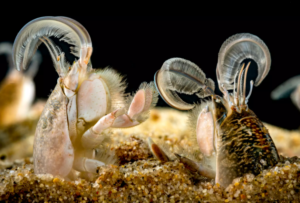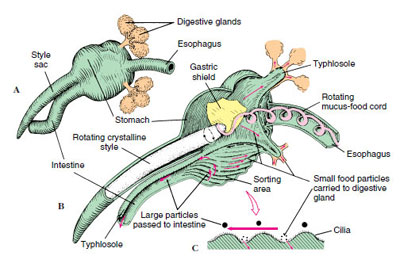
Barnegat Bay is home to several species of crabs, but the Blue crab is the most common and sought after.
Sand Crabs Crustaceans
Atlantic Mole Crab Emerita talpoida also called Atlantic Sand Crab
Mole Crabs / Sand Crabs
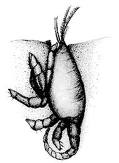 Mole crabs (also known as sand crabs) while not common in the bay, are found on Island Beach and Long Beach Island living in the turmoil of breaking waves.
Mole crabs (also known as sand crabs) while not common in the bay, are found on Island Beach and Long Beach Island living in the turmoil of breaking waves.
They move up and down the tide line to feed in the swash zone. The crabs burrow backward into the sand and face seaward, with only their eyes and first antennae showing.
As a receding wave flows over them, the sand crabs uncoil a second pair of featherlike antennae and sweep them through the water to filter out tiny plankton.
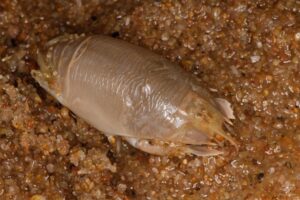 Mole crabs are among the smallest of the crabs.
Mole crabs are among the smallest of the crabs.
Like other crabs they has five pairs of legs, but they do not have pincers.
They move backwards rather than walking sideways.
Mole crabs are egg-shaped and pale grayish-tan in color.
The carapace (shell) is convex with crosswise-creased line immediately behind the beak and another curved one farther back.
The rear end of carapace is smooth.
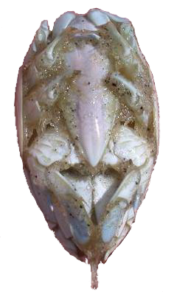 The first pair of walking legs are broad and sturdy broad without pincers.
The first pair of walking legs are broad and sturdy broad without pincers.
The 2nd, 3rd, and 4th pair less sturdy and leaf-like.
The fifth pair are very slender.
The posterior triangular telson along with the 5th pair of legs legs are adapted for digging downward and backwards into the sand.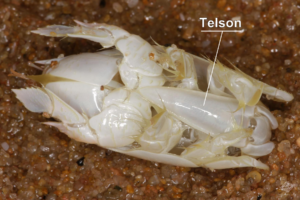
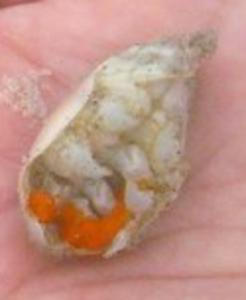 Mating occurs mostly in spring and summer.
Mating occurs mostly in spring and summer.
A female may produce as many as 45,000 eggs.
She carries them on her abdomen until the eggs hatch — about 30 days later.
For two to four months, the larvae drift as plankton, and currents may carry them long distances.
Mole crabs can reproduce during their first year of life, depending on the water temperature, and may not live more than two to three year
